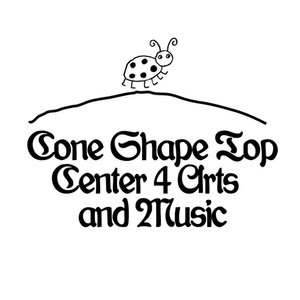
Julius Eastman - Crazy Nigger
Blume, Dec 2018
Vinyl, LP, Album, Limited Edition, Purple Vinyl, 180g
Edition of 300
1 LP, Purple Color Vinyl. 180gr Audiophile pressing. Including printed inner sleeve housing a Nagaoka anti-static record sleeve, plus an original insert that functions as Obi. Housed in a fold-out outer sleeve.
Originally published on Julius Eastman "Unjust Malaise" 3CD, New World Records – 80638-2
Liner Notes – Bradford Bailey, Mary Jane Leach
Mastered By – Giuseppe Ielasi
Photography By – Christine Rusianak
Piano – Frank Ferko, Janet Kattas, Julius Eastman, Patricia Martin (2)
Written By, Performer – Julius Eastman
A Crazy Nigger
B Crazy Nigger
Gay Guerrilla and Evil Nigger, both composed in 1979, with a third work, Crazy Nigger, make up what Eastman called The Nigger Series. Some of the most challenging and beautiful works composed for piano during their era, they double as a window into the intricate thought process and contentiousness of their creator. When the composer was asked to perform the series at Northwestern University in 1980, due to protests by African American students, their titles were censored in the event’s program. His response was a flamboyant foreshadowing of the sentiments toward bigoted language which later arose within hip-hop culture – to publicly take back these words, assert ownership of them, and deploy their power for positive change. What Eastman was early to recognize, was that there is a fundamental difference in what happens when these words are spoken by white people toward people of color, and when people of color deploy them toward a white audience. The balance of power shifts. Eastman’s audience was largely heterosexual and white. He knew exactly what he was doing, and to whom he spoke.
The object in your hands contains some of the most striking and import- ant music composed during the later decades of the 20th century - music which remained lost and unheard for years, not because of what it is, but because of who its composer was. It is music, doubling as the voice of a man, which, because it refused to be oppressed, was suppressed or ignored. Eastman’s work is a conscious act of intervention, plowing into a context defined by heterosexual whiteness, attacking its unjust demands from within. It is Christ like – metaphor and beauty which is impossible to separate from the evils of the world. It is a music which carries the body of a man. As it speaks to our hearts, as it offers an glimpse of the freedoms implied by the sublime, a shackle is bound – a consciousness of our complicity with unforgivable sin. (from linear notes by Bradford Bailey)
Julius Eastman (1940–1990) was an African-American composer, pianist, vocalist, and dancer. Eastman grew up in Ithaca, New York, where he began studying piano at age 14 and made rapid progress. He began college at Ithaca College and transferred to the Curtis Institute of Music, where he studied piano with Mieczyslaw Horszowski and composition with Constant Vauclain.He made his debut as a pianist in 1966 at Town Hall in New York City. He was also possessed of a rich, deep, and extremely flexible singing voice. The latter became famous owing to his 1973 Nonesuch recording of “Eight Songs for a Mad King” by the British composer Peter Maxwell Davies. Eastman's talents brought him to the attention of composer-conductor Lukas Foss, who conducted his music with the Brooklyn Philharmonic.
Eastman's music was often written according to what he considered an "organic" principle by which each new section of a work contained all the information from previous sections, though sometimes "the information is taken out at a gradual and logical rate." The principle is most evident in his three works for four pianos, ”Evil Nigger”, “Crazy Nigger”, and “Gay Guerrilla”, all from around 1979. The last of these appropriates Martin Luther's hymn "A Mighty Fortress Is Our God" as a gay manifesto. Eastman's “Stay On It” from 1973 was an influential post minimalist piece that incorporated pop music influences.
In 1970, Eastman joined the Center for the Creative and Performing Arts at SUNY Buffalo, where he met the Czech-born composer, conductor, and flutist Petr Kotik. Eastman and Kotik performed together extensively in the early to mid 1970s. Eastman was a founding member of the S.E.M. Ensemble. From 1971 he performed and toured with the group, and composed numerous works for it. Many of the earliest performances of Eastman's works were given by the Creative Associates ensemble of University at Buffalo, of which he was a member from 1968.
A 1980 piece for Eastman's voice and cello ensemble, “The Holy Presence of Jeanne d'Arc”, was performed at The Kitchen in New York City, and in 1986 choreographer Molissa Fenley used his work “Thruway “for a dance, “Geologic Moments”, at the Brooklyn Academy of Music.
Also a vocalist, he recorded with Meredith Monk's ensemble for her influential album Dolmen Music (1981).
Despondent about what he saw as a dearth of professional possibilities worthy of him, Eastman grew increasingly dependent on alcohol and crack after 1983, and let his life fall apart. He had taught theory at University at Buffalo, but not very successfully, and a promised job at Cornell University failed to materialize. At one point he was evicted from his apartment, his belongings (including scores) confiscated by the sheriff, and he was forced to live in Tompkins Square Park. Despite a temporary attempt at a comeback, he died alone in Millard Fillmore Hospital in Buffalo of cardiac arrest. So far had he descended from the public eye that no public notice was given to his death until an obituary in the Village Voice by Kyle Gann on January 22, 1991, eight months after his death. - Berliner Festpiele
Click below to listen

